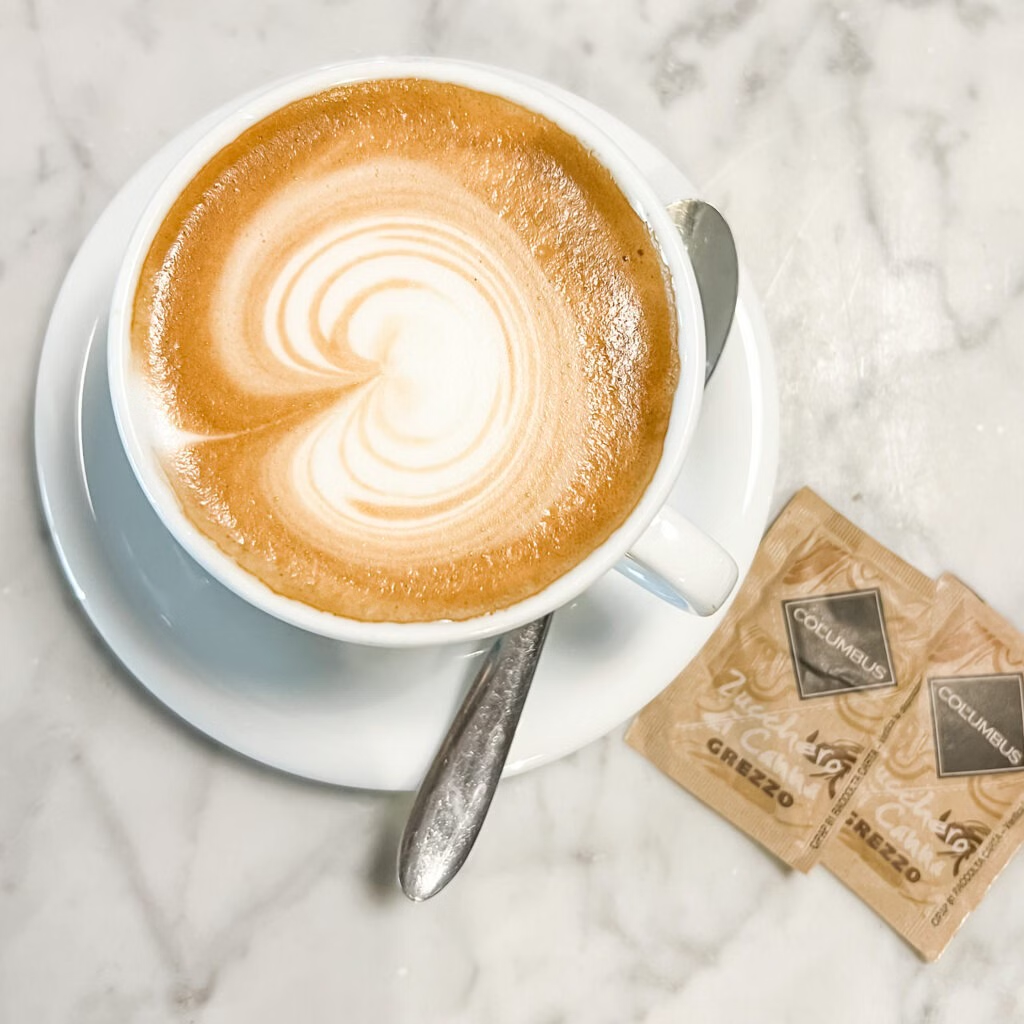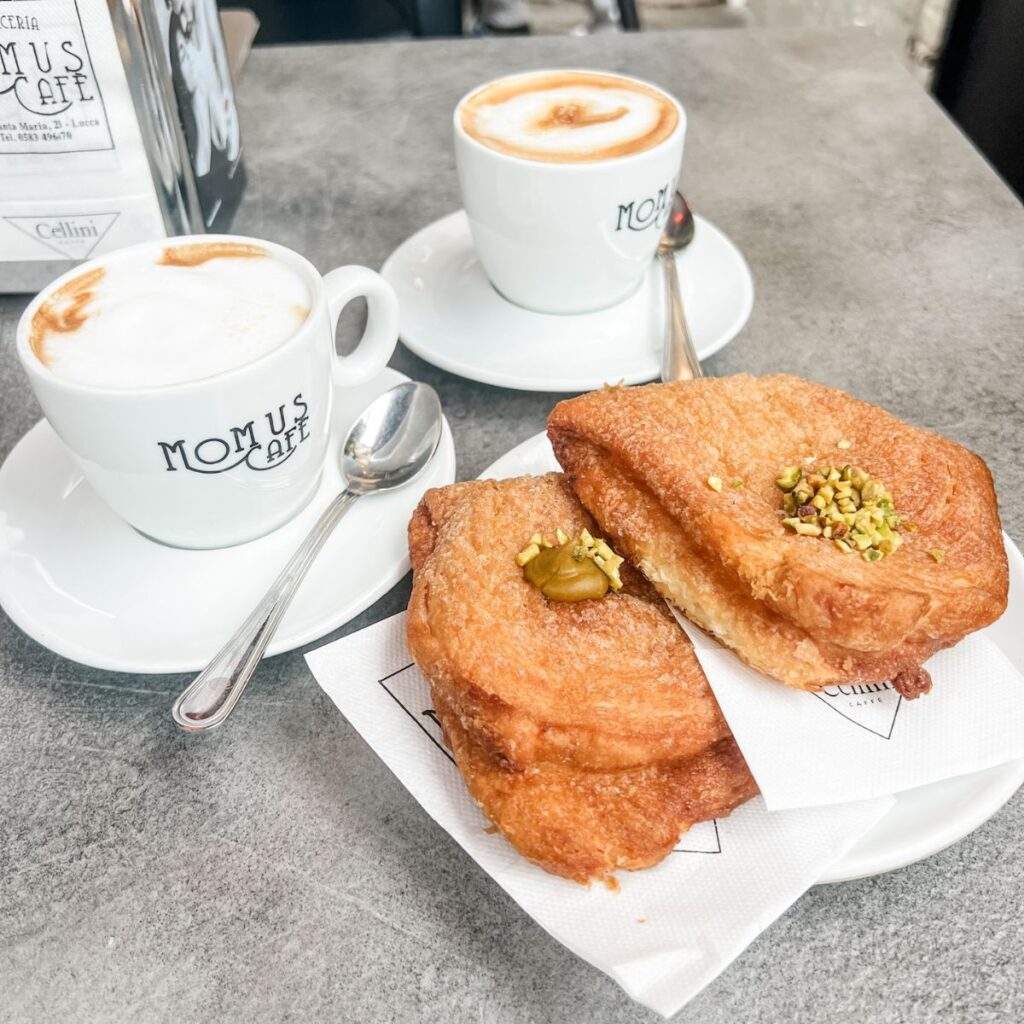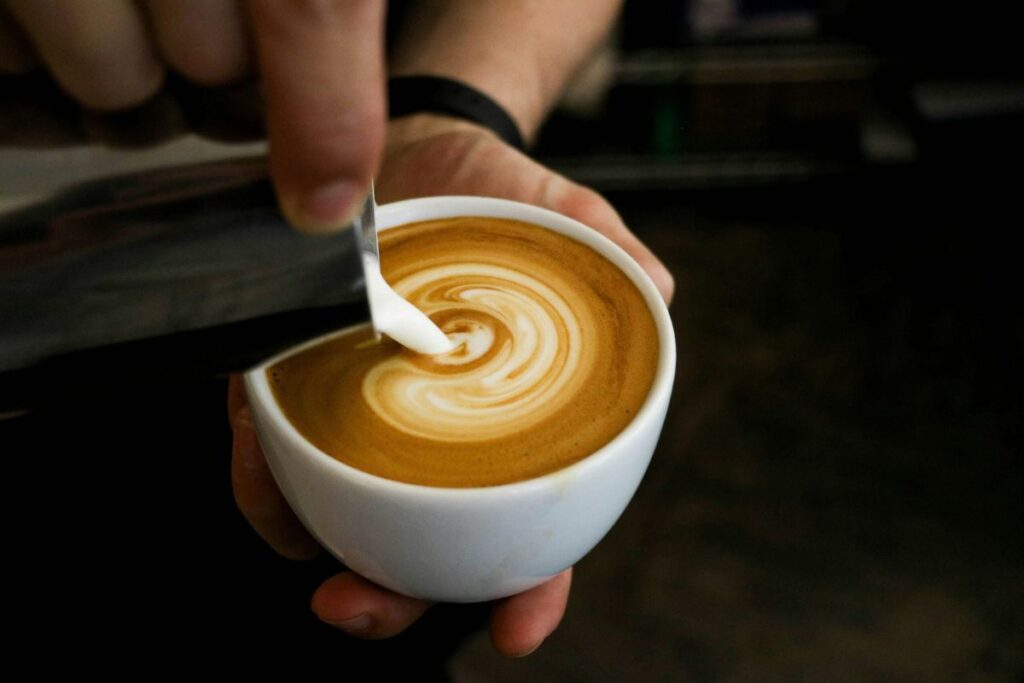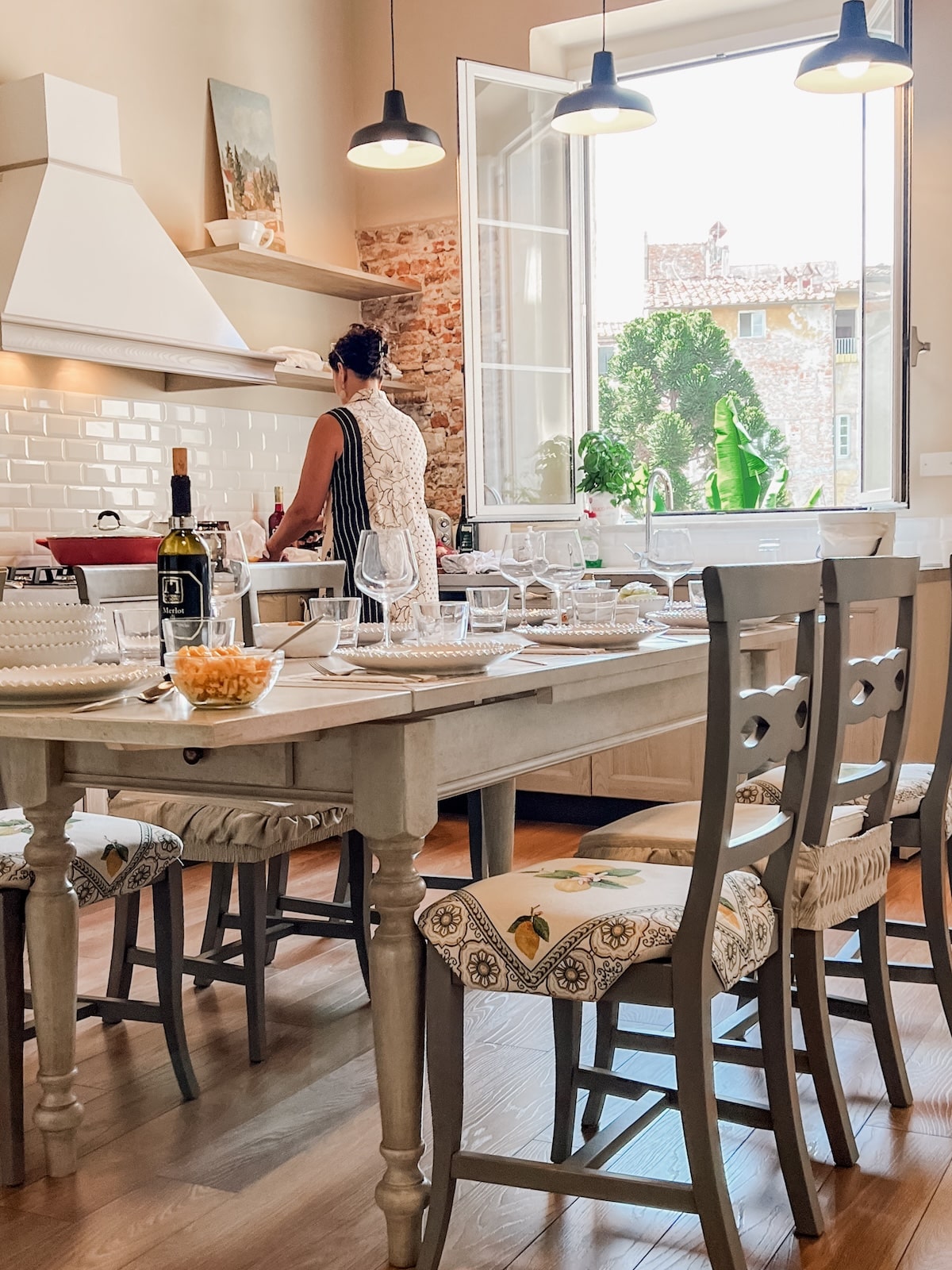
Whether you’re a curious foodie or a traveler planning an Italian adventure, this post is your one-stop guide to learning all you need to know about the unique world of Italian breakfast foods.
From classic sweet pastries to the bold taste of coffee, get ready to go on a delicious journey through the heart of the Italian morning meal!
The History of Italian Breakfast Foods

The authentic Italian breakfast we know and love today has been shaped by centuries of social and cultural evolution. Let’s take a quick trip back in time to explore the roots of this morning tradition.
Roman Roots
In ancient Rome, breakfast was a much simpler affair compared to the elaborate feasts enjoyed by the wealthy later in the day.
The Roman breakfast was called the “ientaculum.” It was usually eaten around sunrise and consisted of bread and maybe some fruit.
The Rise of Coffee Culture: A 16th-Century Game Changer
The 16th century marked a turning point in Italian breakfast history with the arrival of coffee. The first coffee was poured in Venice.
Shortly after, coffee houses began popping up throughout the country, quickly becoming popular social hubs.
This new found love for coffee naturally influenced breakfast habits.
The Sweet Allure of Pasticcerias
As coffee culture flourished, so did the popularity of pasticcerias – specialized shops dedicated to sweet treats.
These shops offered a wide variety of pastries and breads, perfectly complementing the strong espresso enjoyed by morning patrons.
This synergy between coffee and pastries solidified the foundation of the typical Italian breakfast experience enjoyed today.
The Heart of Today’s Typical Italian Breakfast Food Experience

Imagine starting your morning in Italy.
The first thing you see are bustling cafes overflowing with locals enjoying their morning ritual – a quick breakfast and conversation before the day gets going.
Unlike in North America, where breakfast can be leisurely, when Italians eat breakfast it’s quick.
Forget about elaborate pancake stacks or mountains of scrambled eggs.
Here, it’s all about grabbing a sweet bite and a coffee to fuel you for the day ahead.
The key players in this delightful scene?
Local Italian bars (called cafes in North America) and traditional Italian pasticcerias (pastry shops).
These neighborhood gems are the heart and soul of the Italian breakfast experience.
It’s a chance to catch up with friends, read the paper, or simply people-watch before diving into the day’s activities.
The Italian Coffee Tradition: A Caffeinated Kickstart

Italians drink a lot of coffee.
They typically enjoy their first coffee, often at their local bar, between 7:00 and 10:00 am.
Popular coffee variations for breakfast include:
Caffè: [kahf-FEH] (espresso in North America) It’s the undisputed king, a potent shot of concentrated coffee that delivers a powerful caffeine punch. Don’t be intimidated by the small size!
Caffè Doppio: [kahf-FEH DOHP-pyoh] It’s simply a double dose of espresso.
Cappuccino: Espresso topped with frothed milk, creating creamy coffee bliss.
Interesting Cultural Fact: Italians don’t drink cappuccino after 11:00 am! They believe it’s bad for digestion in the afternoon or evening. But that shouldn’t stop you from ordering one! It’s just one of many things that makes Italy so unique.
Caffè Macchiato: [Mah-kee-ah-toh] Espresso with a small amount of milk, usually foamed. In Italian, macchiato means “stained” or “spotted”, so the literal translation of caffè macchiato is “stained coffee” or “marked coffee”. Caffe Macchiatos typically have a 1:2 milk-to-coffee ratio, with an emphasis on the espresso.
Caffè Latte: An espresso mixed with warm milk. It’s perfect for those who prefer a less intense caffeine experience. Order a Caffè Latte if your favorite morning coffee concoction is a “latte” in North America. Be careful though! When ordering be sure to ask for a Caffè Latte. If you say you want a “latte” in Italy you’ll get a glass of cold milk. Latte means “milk” in Italian!
Latte Macchiato: Has a higher milk content, usually in a 3:1 ratio, making it a sweeter and more milky beverage.
Typical Italian Breakfast Foods

Now, let’s talk about the food!
The classic Italian breakfast is a beautiful balance of sweet and simple.
Popular Italian breakfast foods include:
Cornetto: The Italian croissant, often lighter and flakier than its French counterpart. They’re always freshly baked and come with a variety of fillings, from decadent chocolate, ricotta, pistachio cream, and Nutella to name a few.
Biscotti: Twice-baked cookies that are hard and crunchy, perfect for dunking in your coffee. Popular flavors include anise and cantucci (almond biscotti traditionally dipped in Vin Santo, a sweet dessert wine).
Fette Biscottate: [feh-te bih-skot-tah-teh] – Slices of toasted bread (think a thinly sliced piece of bread toasted so that it’s more like a hard cracker) perfect for spreading with jam, Nutella, or honey. A simple but satisfying start to the day.
Focaccia: [fo-kah-cha] – Italian flatbread baked in shallow sheet pans. It’s known for its light and airy texture, with a slightly crispy crust on the top and bottom. While typically associated with lunch or snacks, it’s a common choice for breakfast in regions like Liguria. One of my favorite Italian breakfast items in Lucca is “focaccia dolce” (sweet focaccia)! The focaccia is topped with dried fruits like raisins, figs, or apricots, adding pops of sweetness and texture. The most delicious breakfast you can imagine!
Yogurt or Fresh fruit: For those seeking a lighter option, this a popular choice, offering a quick, refreshing, and healthy alternative.
Exploring Some Regional Traditional Breakfast Specialties

While the core concept of Italian breakfast remains consistent throughout the country – quick, sweet, delicious, and coffee-centric – each region boasts recipes for its unique specialties.
Let’s take a quick journey across Italy to discover some Italian breakfast food traditions:
Sicily:
Granita with Brioche: A popular Sicilian breakfast is granita, a semi-frozen dessert made with sugar, water, and various flavors like coffee, almond, or lemon. It’s often served with a sweet brioche.
The Iconic Cannoli: Imagine crispy fried pastry shells filled with a sweet and creamy ricotta cheese mixture studded with candied fruit and chocolate chips. These treats are a true explosion of flavors and textures, perfect for satisfying your sweet tooth.
Naples:
Sfogliatella Riccia: This beauty translates to “curly puff pastry,” and that’s exactly what it is. Layers of flaky pastry enclose a rich and creamy ricotta cheese filling flavored with candied orange peel. The contrasting textures and the burst of citrus from the orange peel make this pastry a true Neapolitan breakfast favorite.
Puglia:
Pasticciotto: Warm, crumbly, and traditionally filled with a silky, lemon-scented custard, pasticciotto is a delicious shortcrust pastry.
Taralli: If you’re looking for something a little less sweet and more portable, venture to Puglia and discover the delightful world of Taralli Pugliesi. These are small, ring-shaped bread twists that come in a variety of flavors, often containing fennel seeds, olives, or almonds. They’re perfect for grabbing on the go or dipping in your morning coffee for a satisfying and slightly savory breakfast bite.
The Art of Pairing: Matching Your Coffee with Your Breakfast

Italians are masters of flavor combinations, and this extends to the art of pairing coffee with breakfast foods. Choosing the right coffee can elevate your breakfast experience by highlighting the flavors of your chosen food. Here’s a quick guide to help you create the perfect breakfast coffee duo:
The Classic Match: Cornetto & Cappuccino
The undisputed king of Italian breakfast pairings is the combination of a cornetto (croissant) and a cappuccino. The sweetness of the cornetto, whether plain or filled with jam or chocolate, perfectly complements the creamy and slightly sweet cappuccino. The cappuccino’s frothed milk helps cut through the richness of the pastry, creating a delightful balance of textures and flavors.
A Textural Adventure: Biscotti & Espresso
For those who prefer a stronger coffee experience, the pairing of biscotti and espresso is a match made in Italian breakfast heaven.
Biscotti, with their twice-baked, hard texture, are perfect for dipping into a shot of espresso. The contrasting textures create a delicious experience. As you dunk the biscotti, the coffee softens the exterior slightly, releasing the flavors of the almonds or anise for a delightful burst in every bite.
The Art of “Colazione al Bar”

Italians are a busy bunch, and sometimes there’s simply not enough time for a leisurely sit-down breakfast.
Enter the concept of “colazione al bar” (breakfast standing at the bar).
This quick and convenient option involves placing and paying for your order with the cashier, then taking your receipt and handing it to the barista. Your coffee and pastry will quickly be delivered to you and you’ll enjoy it on the spot while standing at the counter.
It’s a fast-paced but fabulous way to fuel up for the day and experience the vibrant energy of Italian mornings.
Eating while standing up at the bar also costs less. If you choose to enjoy your coffee and pastry while seated, you’ll pay a bit more to cover the cost of service.
What Italian Children Eat for Breakfast

While adults favor a quick and sweet breakfast, what do the little ones have on their Italian breakfast table?
Some kids opt for cereal with milk, but most children will enjoy cookies, cake or crostata (jam tart) which they’ll dip in milk.
Fette biscottate (that super crispy, twice-baked bread I mentioned earlier) topped with Nutella or jam is also popular.
The treats are coupled with milk or juice for a yummy start to the day.
Italian Breakfast Foods at Hotels

Most hotels in Italy offer a breakfast buffet, a spread of sweet and savory options that allows you to choose what tempts your taste buds.
Here’s what you can typically expect:
Sweet Treats: You’ll find an array of pastries like cornetti, biscotti, fette biscottate, and cakes. Jams, honey, and Nutella are often provided for spreading.
Savory Options: Cold cuts like prosciutto and salami, various cheeses, olives, and sometimes even sliced vegetables are a common sight.
Yogurt & Fruit: Yogurt with fresh fruit like berries and melon is a refreshing and healthy option for those who prefer a lighter start to the day.
Cereals: A selection of basic cereals like cornflakes and muesli might be available, though not a major focus.
Beverages: Coffee and often freshly squeezed juices.
A Note on Cooked Breakfast: Unlike North America, cooked breakfasts like eggs, bacon, or sausages are less common in Italy. You might find them offered at higher-end hotels, but they’re not the norm.
Better yet, ditch the hotel breakfast (unless it offers something truly special) and head to a local cafe or pasticceria. And don’t be afraid to venture outside the main tourist areas!
You’ll immerse yourself in the Italian morning scene and enjoy a wider variety of fresh, delicious options all while experiencing an authentic atmosphere.
Handy Phrases for Ordering Breakfast Foods in Italy

Knowing a few basic Italian phrases will go a long way. Here are some helpful ones:
“Buongiorno!” (Good morning!)
“Un cappuccino per favore” (A cappuccino, please)
“Un cornetto al cioccolato, per favore” (A chocolate cornetto, please)
“Posso avere un bicchiere di succo d’arancia?” (Can I have a glass of orange juice?)
How to Recreate a Delicious Italian Coffee at Home

Dreaming of a charming Italian cafe and a steaming cappuccino?
While a trip to Italy would be ideal, you can still create an authentic Italian coffee experience right in your own kitchen just like the Italians do.
How to Make Espresso
When Italians make their coffee at home they use the iconic moka pot.
A moka pot is a stovetop coffee maker that brews a strong, flavorful cup of coffee.
The pot is typically made of aluminum and consists of two main chambers. The lower chamber holds water, and the upper chamber collects the brewed coffee. A funnel-shaped filter basket sits between the chambers and holds the coffee grounds. As the water in the lower chamber heats up, it creates steam pressure that forces the hot water up through the coffee grounds and into the upper chamber, brewing the coffee.
Here’s how to use a moka pot:
Ingredients:
- Freshly ground coffee – A medium grind works best for a moka pot, slightly coarser than espresso but finer than drip coffee. Pre-ground coffee is not ideal as it loses freshness quickly.
- Filtered water
Instructions:
- Fill the Base: Fill the lower chamber of the moka pot with cold filtered water up to just below the safety valve.
- Prepare the Coffee: Insert the funnel filter basket into the base. Fill the filter basket with ground coffee, not packing it down. You want a light and even filling. A spoon can help you level the coffee at the top.
- Assemble and Heat: Screw the top chamber of the pot firmly onto the base. Place the pot on a stovetop over medium-low heat. Never use high heat as it can scorch the coffee.
- Brewing Process: As the water heats in the lower chamber, it creates steam pressure. This pressure forces the hot water up through the coffee grounds and into the upper chamber.
- Watch for the Finish: The coffee will begin to brew and collect in the top chamber. Pay attention! Once the coffee starts to flow steadily and turns a lighter golden color, it’s almost finished. When you hear a sputtering or gurgling sound, it’s time to stop the brewing process.
- Stop and Enjoy: Remove the pot from the heat source immediately. If you leave it on the heat, the coffee can become burnt and bitter.
- Serve and Clean: Pour your coffee and enjoy! Run hot water through the pot for cleaning. Avoid using soap, as it can leave a residue and affect the coffee taste. Let the pot cool completely before reassembling the chambers.
Tips:
- Use good quality, freshly roasted coffee beans for the best flavor.
- Adjust the coffee grind size as needed. If the coffee brews too quickly or slowly, experiment with a finer or coarser grind.
- Don’t overfill the filter basket with coffee grounds.
- Preheating the pot with hot water can help improve coffee extraction.
- Never put the moka pot in the dishwasher, as it can damage the gasket and safety valve.
How to Prepare a Homemade Cappucino

Here’s how to prepare milk for a cappuccino at home with a handheld milk frother:
Ingredients:
- Cold whole milk – Whole milk froths best due to its higher fat content, but you can also use skim milk or non-dairy alternatives like oat milk or almond milk. Experiment to find what you prefer, keeping in mind these alternatives may not froth as thickly.
- Handheld milk frother
Instructions:
- Choose your vessel: Select a container large enough to hold your desired amount of milk with room for frothing (the milk will roughly double in volume). A stainless steel pitcher works well.
- Fill and heat (optional): Pour in cold milk to your desired final volume after frothing (usually around 1/3 of the pitcher). You can heat the milk beforehand in a saucepan or microwave to around 140-150°F (60-65°C) for better frothing, but it’s not essential. Be careful not to overheat the milk, as it can scorch.
- Immerse the frother: Submerge the frothing head of your handheld frother just below the surface of the milk, ideally at an angle slightly off-center.
- Froth!: Turn on the frother and begin frothing the milk. There are two main textures for cappuccino milk:
- Wet foam (microfoam): This is the ideal texture for cappuccinos. It should have a smooth, velvety consistency with tiny bubbles. To achieve this, move the frother up and down in a gentle pumping motion for about 30-60 seconds until the milk volume roughly doubles and becomes thick and creamy.
- Dry foam: This is a thicker foam with larger bubbles, more for lattes. If you accidentally create too much dry foam, you can tap the pitcher to break down some of the larger bubbles.
- Stop and swirl: Once you’ve achieved the desired texture, turn off the frother and give the milk a final swirl with a spoon to incorporate the foam and heated milk.
Tips:
- Use cold milk for better frothing.
- Keep the frothing head just below the surface of the milk to avoid creating too much splashing.
- Don’t over-froth the milk. You want it thick and creamy, not stiff.
- If your milk isn’t frothing well, try using a different type of milk or a different frothing technique.
- Practice makes perfect! The more you use your handheld frother, the better you’ll become at frothing milk.
With a little practice, you’ll be brewing delicious Italian-style coffee in no time!
And Don’t Forget The Yummy Baked Treats: If you can’t find quality morning pastries at your local bakery or grocery store you can make them at home!
Conclusion: A Breakfast to Remember
Italian breakfast is more than just a meal; it’s a cultural experience. It’s about savoring delicious food, enjoying a steaming cup of coffee, and soaking in the vibrant atmosphere of Italian mornings. On your next trip to Italy, ditch the expectations of a heavy breakfast and embrace the simple pleasures of a cornetto and a cappuccino. You might just discover your new favorite way to start the day!
Did you enjoy this post? Share it with a friend with the social links below or at the top of this post!
Further Reading:
🌻 101 Quotes About Italian Life and the Beauty of Italy
🌻 39 Things To Know Before Traveling to Italy
Pin to read later






Oh, can’t wait to experience this again soon – hopefully this July. Italy has the best cappuccinos and croissants. And it is really nice to enjoy it at the bar just like the locals 🙂
Hello Marié! The bar experience definitely makes you feel like a local. Such a great way to start your day in Italy! Enjoy your trip to Italy this July!